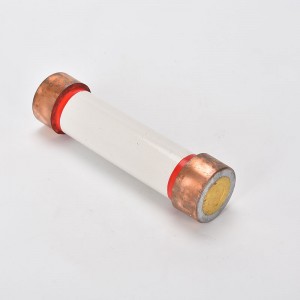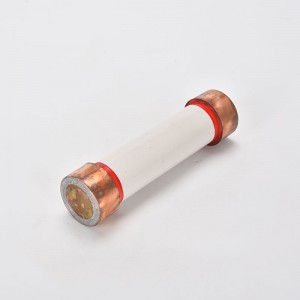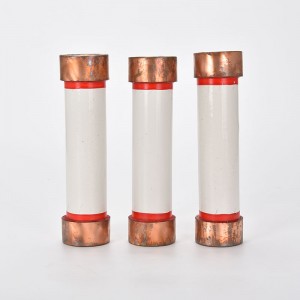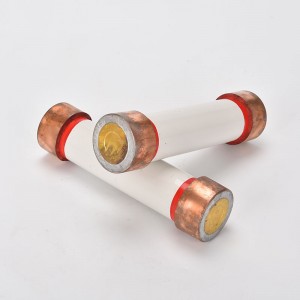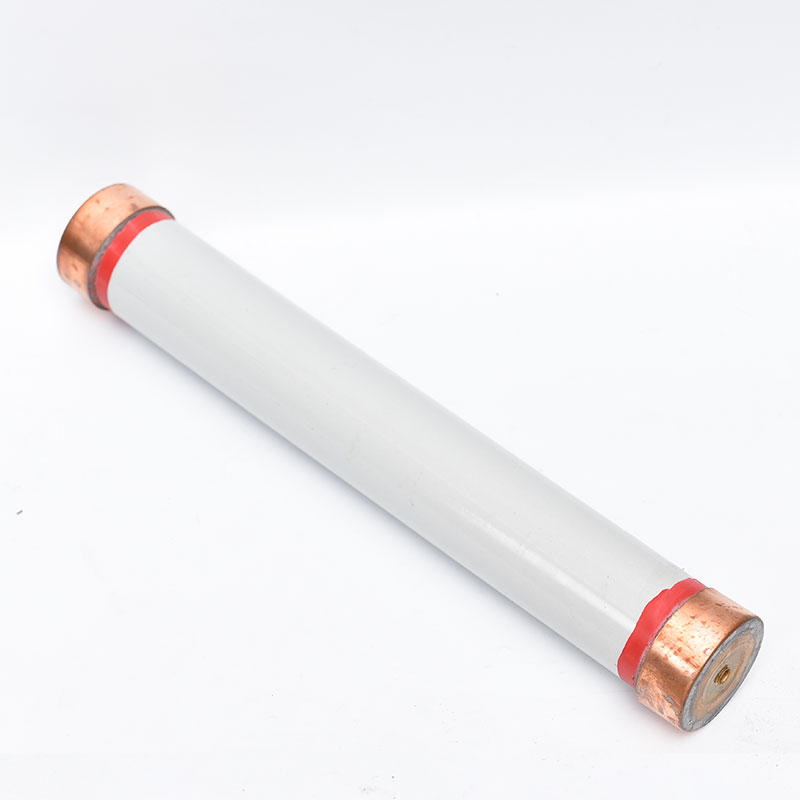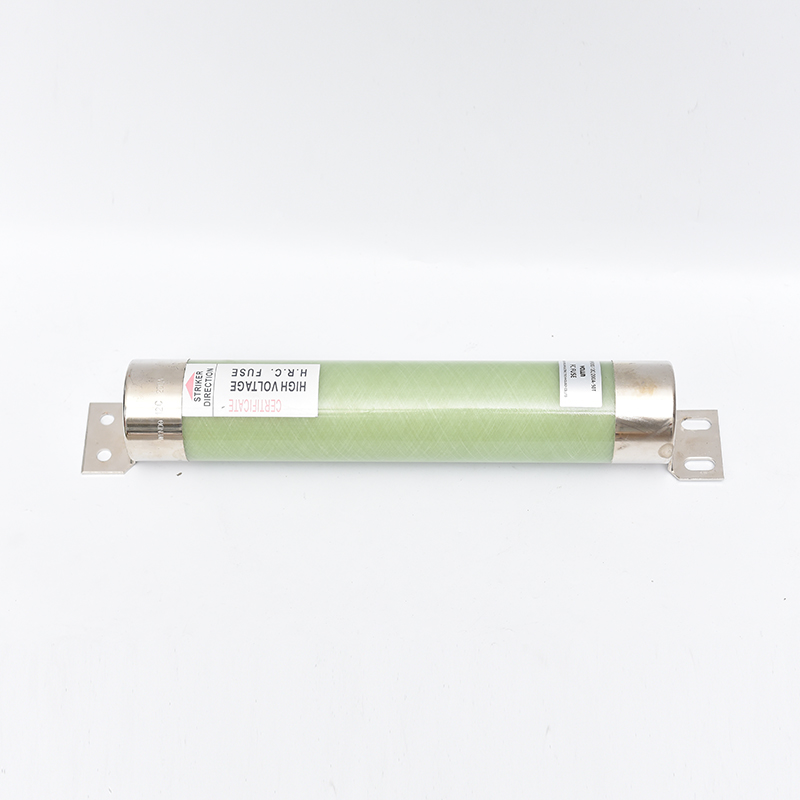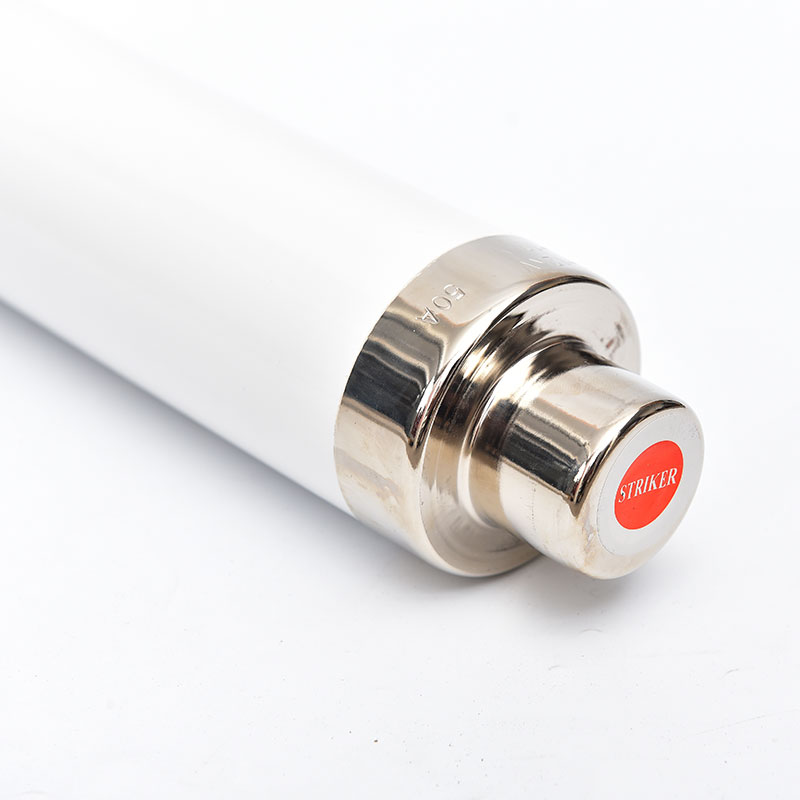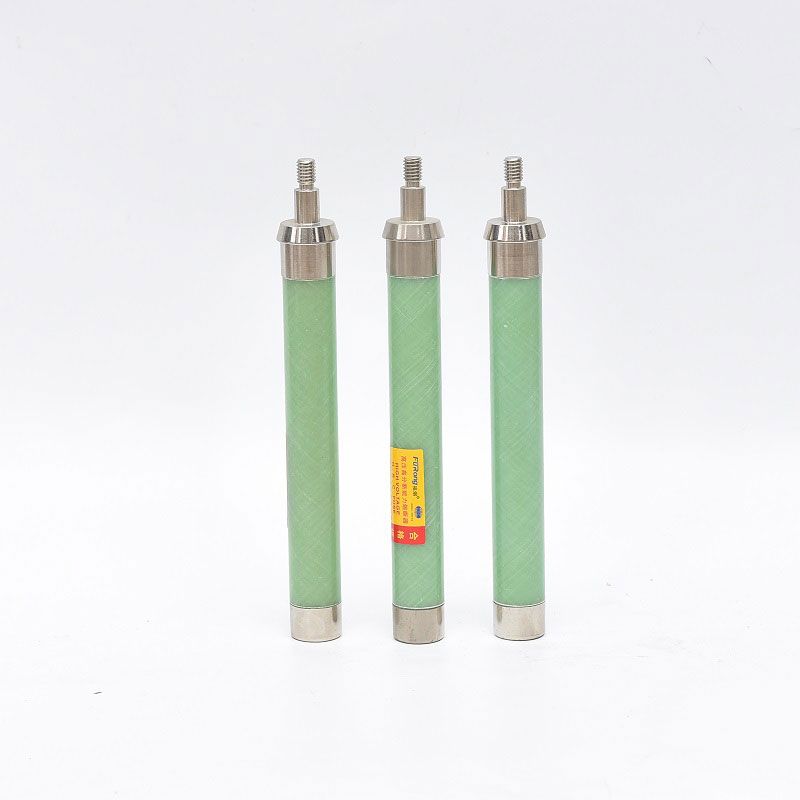Overview
High voltage fuse is the weakest element artificially set in the power grid. When the over-current flows, the element itself will heat and fuse, and the circuit will be broken by the role of arc extinguishing medium to protect power lines and electrical equipment. Fuses are widely used in small capacity power grids with voltage below 35 kV.
The fuse consists of fuse tube, contact conductive system, post insulator and base plate (or mounting plate). It can be divided into current limiting fuse and drop fuse.
Structure
The fuse of this series consists of two post insulators, contact base, fuse tube and base plate. The post insulator is installed on the base plate, the contact seat is fixed on the post insulator, and the fuse tube is placed in the contact seat and fixed, but the copper caps at both ends are wound on the porcelain tube, and the fuse in the fuse barrel is rated according to the current size. One or more fuses are wound on the ribbed core (rated current less than 7.5A) or directly installed in the tube (rated current greater than 7.5A), and then filled with quartz sand. Copper covers are used at both ends. When the overload current or short circuit current passes, the fuse will blow immediately, and the arc will be generated at the same time, and the quartz sand will extinguish the arc immediately. When the fuse blows, the cable of the spring also blows and pops out of the spring, indicating that the fuse is blown. To complete the task.
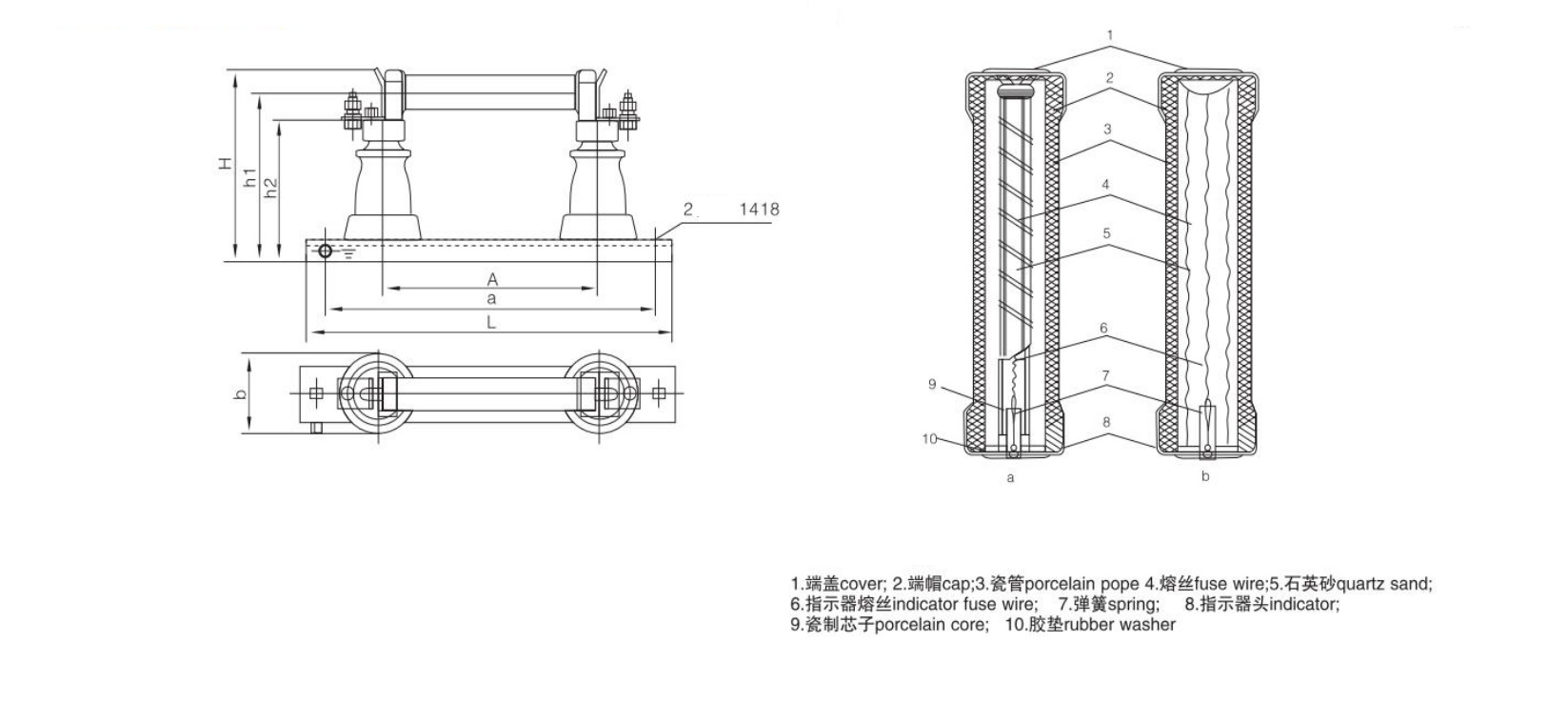
Instructions for use
RN1 type indoor filled quartz sand fuse, suitable for:
(1) The altitude is not higher than 1000 meters.
(2) The temperature of the surrounding medium is not higher than +40℃, not lower than -40℃.
Type RN1 fuses cannot work in the following environments:
(1) Indoor places with relative humidity greater than 95%.
(2) There are places where there is a danger of burning goods and explosions.
(3) Places with severe vibration, swing or impact.
(4) Areas with an altitude of more than 2,000 meters.
(5) Air pollution areas and special humid places.
(6) Special places (such as used in X-ray devices).


